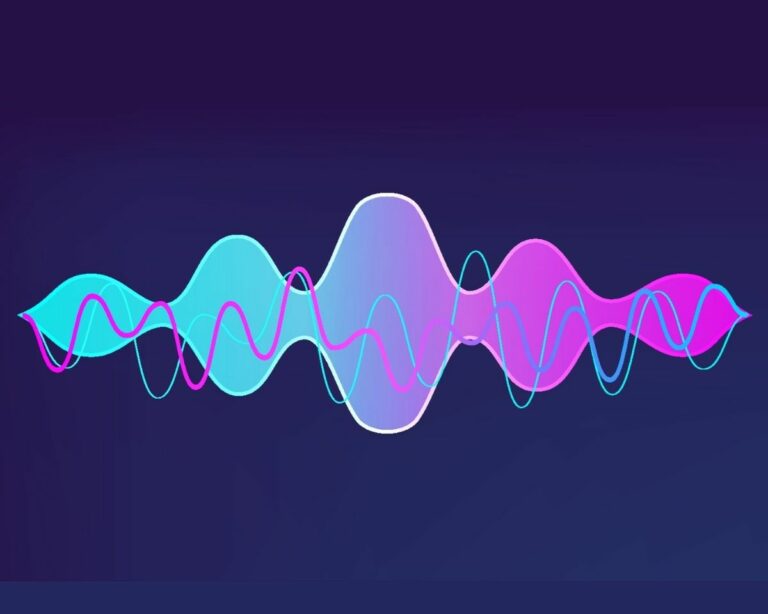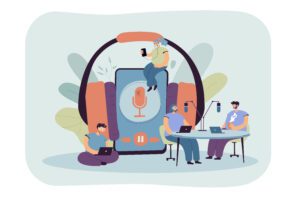AI content generation helps podcasters save time. But how do you become a podcast creator?
And how does AI content generation improve this path… we will discuss!
The path to being a savvy podcaster
There is no easy path to becoming a successful podcast creator. You might spend weeks reading different articles and researching different content pillars. And then a few more weeks learning the stages of podcast production, and the importance of sound design. And then you create a podcast that is exceptional. But then finally, once your podcast is out in the world you have your biggest challenge yet – finding listeners.
As a podcast creator, you’ll need to do a few things with your podcast you may not have expected. Creating a solid marketing plan to drive audiences to your content is essential. Content like audiograms and videos will help support your podcast and entice people to listen – and that content should be posted everywhere.
Read on for the tips on what content you will need to help promote your podcast and build audiences, and how AI content generation can fast track that.
Podcast creation still requires additional content creation
The main content formats are written, video and audio. No matter which you start with, you can always get to the other formats and thereby – tripling the amount of content you produce. If you start with an audio podcast, we always recommend that you record your podcast with video. That way you instantly have a way to publish to video channels such as YouTube and Vimeo and reach an audience who prefers to consume content there.
You will also have engaging, visual promotional assets that you can edit and distribute across social media; short-form clips of great quotes and thought pieces from your guests. Your goal should be, not to necessarily grow your podcast, but to get your personal brand, company, or ideas in front of as many relevant eyeballs as possible.
Transcribe your podcast and post the transcription for those trying to find content like yours on search engines. Take the transcription and turn it into thought pieces, blogs and articles, interweaving quotes from your guest to enhance its authority.
Podcast creators repurpose their content for various channels
You have 20, 60, 120 minutes of content every time you publish a podcast. Ensure that you maximise the time and effort you put into it by pushing it into new channels.
Video content is highly visual, so the process of turning it into written and audio content can be more challenging. It will need to be tweaked in order to publish it as a podcast. Where visuals would have once provided context, you now need to provide additional descriptions. Take your script alongside your storyboard and read both the voice over and provide descriptions when required.
If you have a video in which visuals are central, your podcast can be a spin-off, taking fans through the production of your video giving great context to your audience on your methodologies.
If these are not viable, you can always focus on written content with supporting visuals. Transcribe your video and upload it to your website with images supporting the copy. Your content is then searchable in full by search engines and can attract a new audience who would not have found you otherwise.
The topics that your videos explore can simply be written as stand-alone pieces. It is far easier to write something that you are very familiar with, than an entirely new topic. If you have written a script for a video – write it as an article at the same time. You’ll find it an efficient process with all your research and supporting visuals completed.
Clips of your video are suitable for all kinds of visual channels, such as Instagram, Facebook, LinkedIn, TikTok, YouTube Stories and many more. Take your complete video and cut it down into snackable parts. Grow audiences outside your current channels with little effort.
Successful podcast creators think outside the box for content inspiration
Although many of us like to write, most social platforms are skewed to support visual elements. Long, structured, paragraphs can lose the interest of users quickly. Or, out of preference, they prefer to listen or watch content.
Just like this written post for example – it does not need to stay in this format. Try reading this article aloud. It could easily be a perfect podcast. Can you see quote-worthy extracts that would be perfect as a short-form video? Absolutely!
We already know from the above sections that it’s easy to take a podcast and turn it into a video. So, record yourself reading your article. You have long-form videos to publish on channels such as YouTube. You have video quotes of your articles to publish on social channels. You are no longer restricted to your website, but you can publish your brand and ideas everywhere. It should not be a matter of “if” you publish to other channels, but “when” and how regularly. That is how you grow a large audience and that’s how you become efficient with your time.
Smart podcast creators use AI content generation tools to fast track the production process and publish content faster
Once you have hours and hours of content, what do you do with it next?
Not only does Sonnant transcribe your audio and video content in full (so you can maximise its value) it also stores your content in a searchable library. That means you can go back to that podcast episode you created 2 years ago where someone mentioned a topic or subject that has become relevant again and republish it.
Hours of content already ready and waiting to be given a new lease of life. You’ve got a massive back catalogue of content, so isn’t it great that you can publish it without any effort.
Build your podcast audience with less effort.
Give us a go with one hour on us!




